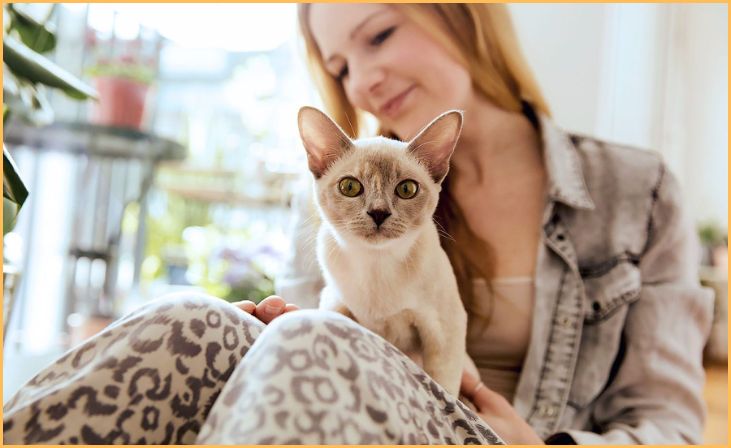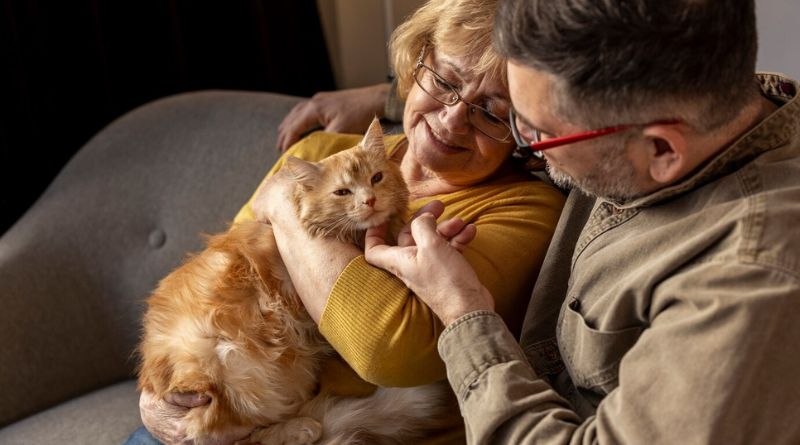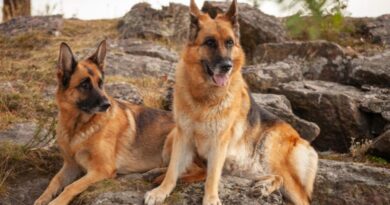Tips for Raising an Affectionate Cat – Building a strong and affectionate relationship with your cat is not only rewarding for you but also essential for your feline friend’s well-being. Cats, known for their independent nature, can form deep bonds when provided with the right environment and attention.
In this guide, we’ll explore practical tips for fostering affection in your cat, recognizing their unique personalities, and creating a harmonious living space. From interactive play sessions to respecting your cat’s boundaries, each aspect contributes to a loving connection.
By understanding your cat’s preferences and consistently applying positive reinforcement, you’ll embark on a journey towards a joyful and affectionate companionship that benefits both you and your furry friend.
Benefits of having an affectionate cat
Having an affectionate cat brings numerous benefits to both the cat owner and the feline companion. These include:
- Emotional Well-Being: Affectionate cats provide companionship and emotional support, reducing feelings of loneliness and stress in their owners.
- Bonding and Connection: Affection fosters a strong bond between the cat and its owner, creating a sense of trust and mutual understanding.
- Reduced Anxiety: Interacting with an affectionate cat has been shown to lower stress levels and promote relaxation, contributing to a calmer and more positive atmosphere at home.
- Health Benefits: The act of petting and cuddling with a cat can release oxytocin, the “feel-good” hormone, leading to lower blood pressure and improved cardiovascular health.
- Entertainment and Play: Affectionate cats often engage more readily in interactive play, providing entertainment and promoting physical activity for both the cat and its owner.
- Improved Mood: The presence of an affectionate cat can elevate mood and bring joy, contributing to a more positive outlook on life.
- Sense of Purpose: Caring for an affectionate cat gives owners a sense of purpose, as they provide love, care, and attention to their furry companions.
Also, Read – Cat Breeds That Love Water and Swimming
Tips for Raising an Affectionate Cat
Early Socialization

Early socialization is crucial for raising an affectionate cat. Introduce your kitten to various people, environments, and experiences during its early weeks. Gently handle and interact with your cat, using treats and positive reinforcement to create a favorable association with human touch.
Respect their need for personal space, providing a quiet retreat. Engage in interactive play to strengthen your bond, using toys that stimulate natural instincts. Regular grooming sessions, introduced gradually and positively, further enhance the connection.
Create positive associations by incorporating treats and meals into your interactions. Observing your cat’s cues and adjusting your approach helps foster a trusting and affectionate relationship.
Gentle Handling and Positive Reinforcement
Foster affection in your cat through gentle handling and positive reinforcement. Start handling your cat with care from a young age, using soft touches and a calm demeanor. Associate handling with positive experiences by offering treats and praise during interactions.
Pay attention to your cat’s comfort level, respecting their boundaries to build trust. Gradually extend handling sessions, making them enjoyable and stress-free. Positive reinforcement, such as treats or affectionate words, reinforces the connection between pleasant experiences and your touch.
This approach encourages a positive association with human interaction, promoting a more affectionate relationship with your feline companion.
Respect Their Space

Respecting your cat’s space is essential for building trust and fostering affection. Ensure your feline friend has a designated, quiet area where they can retreat and feel secure. Avoid invading this space without invitation, allowing your cat to control their interactions.
This promotes a sense of safety and independence. Pay attention to their body language, as signs of stress or discomfort indicate the need for space. Provide cozy hiding spots and comfortable perches to enhance their environment.
By acknowledging and respecting their territorial boundaries, you create a foundation for a trusting relationship, encouraging your cat to feel more at ease and affectionate in your presence.
Playtime
Engaging in regular playtime is key to fostering affection in your cat. Use interactive toys like feather wands, laser pointers, or balls to stimulate their natural instincts. Make play sessions enjoyable with varied movements, mimicking prey behavior.
This not only provides physical exercise but also strengthens the bond between you and your cat. Observe their preferences and tailor the play to their liking.
Always use positive reinforcement, such as treats or praise, to associate playtime with positive experiences. Consistent, enjoyable play sessions contribute to a happier and more affectionate relationship, as your cat associates you with fun and fulfilling activities.
Regular Grooming
Regular grooming is a vital component of building affection with your cat. Introduce grooming gradually, starting with short sessions and using positive reinforcement like treats. Brushing not only maintains a healthy coat by reducing shedding but also fosters a bonding experience. Pay attention to your cat’s comfort and adjust your approach accordingly.
Use a gentle touch and speak soothingly during grooming sessions to create a positive association. For cats that may be more resistant, consider professional grooming services. Consistent grooming not only keeps your cat clean but also strengthens the emotional connection between you and your feline friend, promoting a more affectionate relationship.
Also, Read – Scientific Benefits of Cat Ownership
Create Positive Associations

Creating positive associations is crucial for fostering affection in your cat. Incorporate treats, meals, or favorite toys into your interactions to make them enjoyable. Offer these rewards during petting, play, or grooming sessions to associate positive experiences with your presence. Pay attention to your cat’s preferences, reinforcing behaviors you want to encourage.
Consistency is key, as repeated positive associations build trust and strengthen your bond over time. Use a calm and gentle approach to avoid causing stress. By consistently pairing positive experiences with your interaction, you’ll cultivate a warm and affectionate relationship, making your cat more inclined to seek your companionship willingly.
Conclusion
In conclusion, the rewards of nurturing an affectionate bond with your cat extend far beyond companionship. The emotional well-being, reduced stress, and health benefits contribute to a harmonious and fulfilling relationship. As you invest time in understanding and meeting your cat’s needs, the joy and contentment shared between you and your feline companion create a lasting and mutually enriching connection.
Cherishing the unique qualities of your affectionate cat enhances not only your daily life but also promotes a positive atmosphere where both you and your furry friend thrive.
FAQs
Provide a safe space, comfortable bedding, and engaging toys. Ensure a consistent routine, a quiet resting area, and opportunities for mental and physical stimulation.
Signs of an affectionate cat include purring, kneading, head-butting, and seeking physical contact. Observe your cat’s body language and responsiveness to your presence.
Establish a gentle grooming routine early on. Use a soft brush, offer treats as rewards, and gradually increase the duration to make grooming a positive experience.







